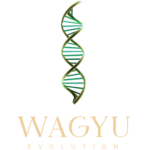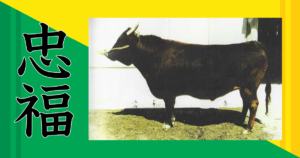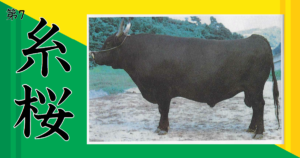History Of The Tajima Line
Table of Contents
Tajima beef, a product of the most common high-quality beef cattle breed in Japan, the Japanese Black (JB),is a culinary treasure with a share of 90% (MAFF, 2016).
The Tajiri/Tajima line, one of the three basic bloodlines of JB, stands out with its unique characteristics. These include the highest marbling quality, a smaller frame, and lower growth rates. The most special thing about Tajima beef is its pedigree. For a long time, farmers have been careful not to breed other cattle with cows from outside Hyogo Prefecture, making it the only breed in Japan that maintains purebred cattle.
Cattle fattened within the prefecture are called “Tajima Beef’”, and only those that pass the strict conditions can be called `Kobe Beef.’ All these can be traced back to one single bull that gave rise to this popular line; Wagyu would not be where it is today if it wasn’t for some luck. And it all started in a small village.
Who is Shuske Maeda?
During the Edo period, in the valley villages of Inotani, Mizuma, and Ojiro within the Mikata District (specifically Ojiro Ward, Kami Town), farming was the primary occupation, but wealth was scarce. Shusuke Maeda, a cowherd residing in Ojiro Village, aimed to improve village life by breeding and selling high-quality cattle.
Recognizing the adage “good cows beget good cows,” he meticulously recorded birthdates, parentage, and ownership of exceptional cattle. Investing his assets, he procured a special three-year-old female cow at a remarkable price, successfully breeding high-quality offspring known as Shusuke Tsuru. Despite interest from other regions, Shusuke staunchly refused to sell these prized cows, keeping them within Ojiro Village.
How Did Shuske Maeda Save The Tajima Bloodline?
Shusuke Maeda’s efforts played a pivotal role in rescuing Tajima cattle from the brink of extinction. The decline of Tajima cattle began in the latter part of the Meiji period when attempts were made to crossbreed them with foreign cattle in a bid to increase their size and suitability for meat production.
However, this endeavor failed, resulting in aggressive behavior, poor exercise habits, and a decline in meat quality and characteristics. Realizing the necessity of returning to purebred Tajima cattle, Shusuke faced the challenge of scarcity, as purebred Tajima cattle were nearly extinct in his vicinity. After an exhaustive search, he managed to locate four purebred Tajima cows, all descendants of Shusuke Tsuru’s bloodline, notably one named “Nuigo.”
Ojiro Village’s isolation from neighboring villages spared its Tajima cattle from crossbreeding with foreign species. Consequently, Shusuke diligently maintained the purity and improved the lineage of Tajima cattle by abstaining from crossbreeding with other breeds and only using the sperm of select bulls for fertilization.
Introducing Fukue – The Progenitor of The Bull Tajiri
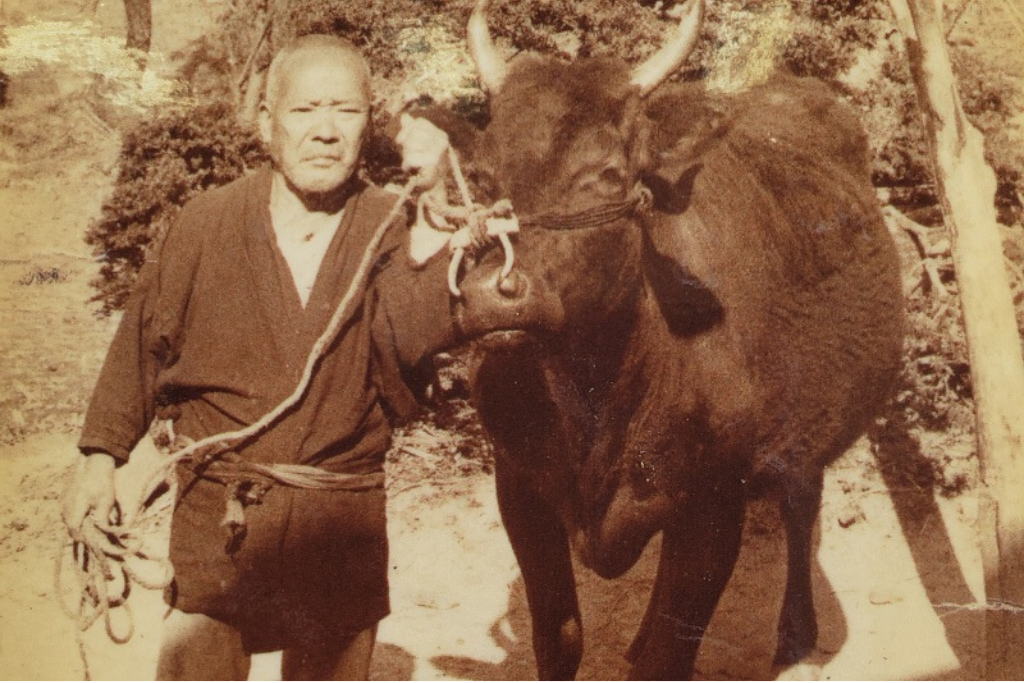
A few years later, in the Koshiro Village of Nukita, Matsuzo Tajiri, who was a humble cowherd, encountered Fukue. She was a fourth-generation cow from the Nui-go lineage, and instantly fell in love with her.
Despite his modest means, Matsuzo borrowed a considerable sum to purchase Fukue. Renowned for his meticulous care and daily interaction with his cattle, Matsuzo possessed a keen eye for identifying quality animals, akin to Shusuke Maeda. His affection for Fukue was profound, and when Fukue bore her fourth offspring, Tajiri, a notable bull, Matsuzo recognized his potential as a superior sire.
Devoting himself to Tajiri’s daily exercise and care, Matsuzo’s efforts bore fruit when Tajiri, although not exceptionally built, gained recognition as a prospective breeding bull for Mikata County within six months of his birth, marking the genesis of modern Tajima cattle. Despite the absence of artificial insemination technology, Tajiri’s remarkable reproductive prowess resulted in nearly 1,500 offspring nationwide over his twelve-and-a-half-year tenure as a breeding bull.
His exceptional genetic predisposition for meat quality laid the foundation for world-class Wagyu beef, earning him accolades and recognition, including the Medal with Yellow Ribbon awarded to Matsuzo in 1955 for his role in Tajiri’s production. A monument erected in Tajiri’s honor commemorates the collective efforts that led to his birth, emphasizing the miraculous outcome achieved through unwavering dedication to Wagyu beef production. Tajiri’s legacy endured beyond his lifespan, as his contribution as a distinguished stud significantly influenced the development of the Japanese Kuroge breed.
It turns out that 99.9% of the Japanese black breeds are descended from Tajiri.
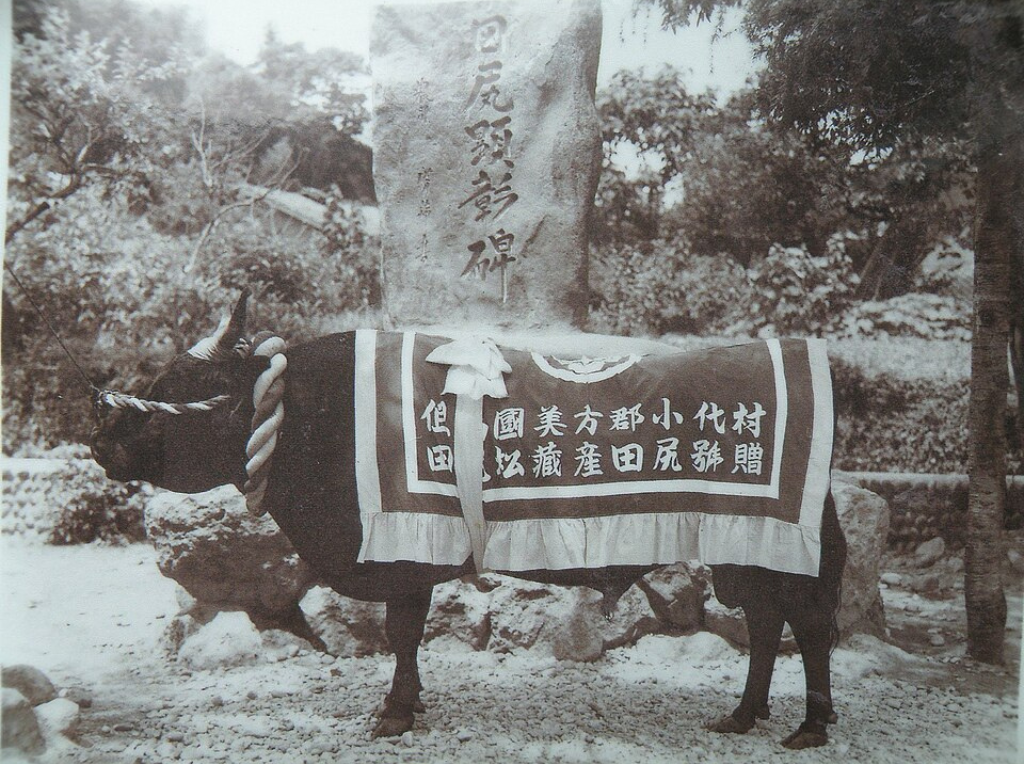
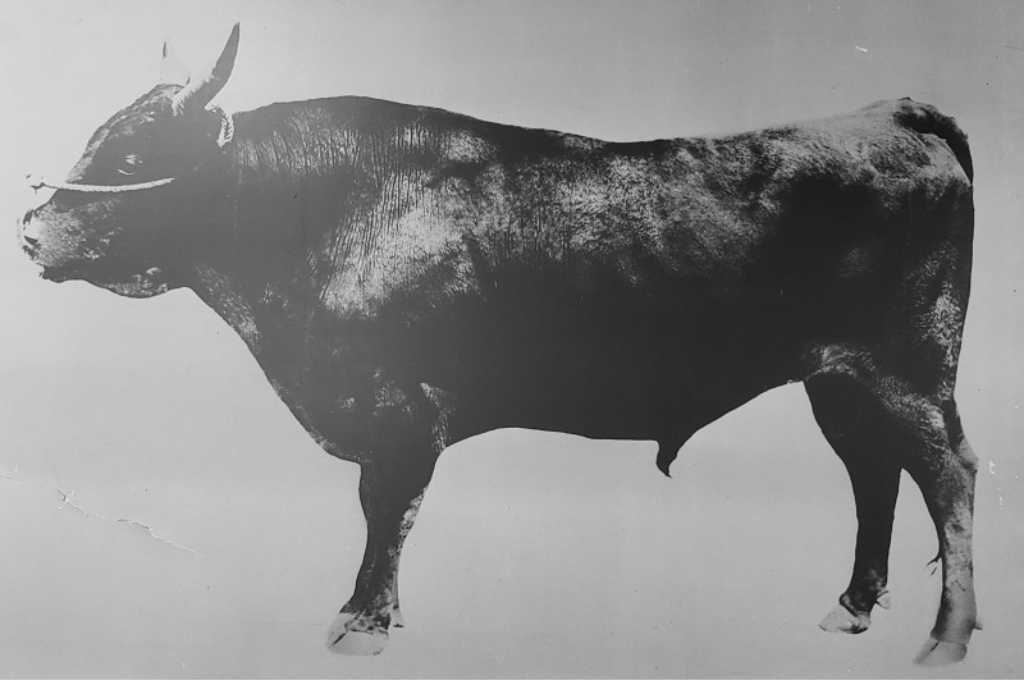
In February 2012, research by the National Wagyu Registration Association revealed surprising numbers regarding Tajima beef. It has been proven that 99.9% of the Kuroge Wagyu cattle in Japan are descendants of the Tajiri. We found out that 99.9% of the mother cows are descendants of the Tajiri, which means that most of the Japanese Kuroge Wagyu cattle that are born are descendants of the Tajiri.
Conclusion
Shusuke Maeda’s promise to breed the best animals. His smart decision to keep a purebred line going and Matsuzo Tajiri’s unwavering commitment to raising the exceptional bull “Tajiri” were key moments. Now, Tajiri’s work goes on. He is the father of 99.9% of Japan’s Kuroge Wagyu cattle, which shows how important focused breeding methods were and how passionate these early farmers were. Tajima beef, which comes from this careful lineage, results from generations of hard work and a lesson of how human involvement in animal farming can change things.
References
Promotional body for Ojiro, Kami Town website https://utsukushii-mura-ojiro.com/tajimaushi.html
Tajima Beef, Kobe Beef’s origin|Kobe Beef’s origin|Visit Shinonsen. (n.d.). http://visit.shinonsen.com/kobebeef/
MAFF (2016) Tokyo: Ministry of Agriculture, Forestry and Fisheries of Japan. https://www.maff.go.jp/e/policies/intel/gi_act/register/s2.html
National Wagyu Registration Association http://cus4.zwtk.or.jp/blog/category/katudou/
